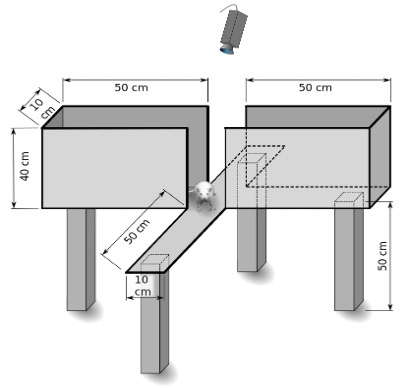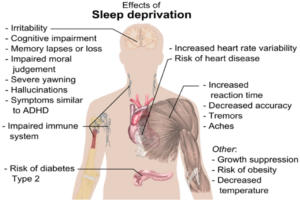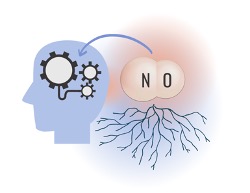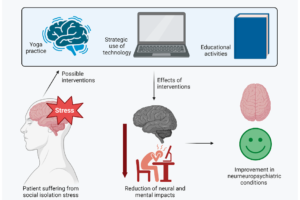
Figure 1: Elevated Plus Maze used to measure anxiety-like behavior in rats
Source: Frontiers, Samueljohn.de
Previous research into anxiety disorders has indicated that although anxiety has a prominent genetic component, it can be influenced by environmental factors too. Individuals residing in an environment enriched with social relationships and beneficial parenting practices can alleviate anxiety, while living in environments absent of these qualities can exacerbate symptoms (Lawrence et. al., 2019). A study by Costa et. al. observed the effects of neonatal handling on anxiety-like behavior in rats and predicted that handling would reduce such behavior in adolescent rats (Costa et. al., 2012). In this study, the rats were handled by either lifting them from the base of their tail or around their ribcage and by cradling them for 5 minutes daily, 5 days a week and for 6 weeks. The results of this study indicated that handling promoted the natural exploratory tendencies of rats while decreasing their emotional behavior and stress responses.
Costa et. al. used the Elevated Plus Maze (EPM) to observe the relationship between anxiety and handling. The EPM is a commonly used behavioral test for anxiety-like behavior in rats. It is a “plus” shaped maze consisting of two open arms, two closed arms and a center area (Walf & Frye, 2007). The rats used in this experiment were all male, adolescent (60 days old), and were of the Sprague-Dawley breed. These rats were divided into two groups – one control and one experimental – and were exposed to the EPM. The number of entries and the time spent in the open arms of the EPM were tracked by the researchers and the effectiveness of the treatment was measured by the number of open arm entries. Since rats would typically be afraid to enter the open arms of the maze, a greater number of open arm entries by the rat implies a lesser fear and stress response experienced by the rat (Costa et al., 2012).
The findings of this study supported the initial hypothesis that handling will reduce anxiety-like behavior in rats. The handled rats showed a greater tendency to explore the open arms of the maze when compared with the control group. Furthermore, handled rats entered the open arms about 4.17 times per trial on average, and spent approximately 12% of their time in the maze in the open arms. Conversely, some rats in the control group did not enter the open arms of the maze at all. This suggests that the treatment rats had a decreased stress response and decreased anxiety levels (Costa et. al., 2012). Furthermore, blood tests revealed that rats in the treatment group had lower levels of norepinephrine. Norepinephrine is a hormone which influences the functioning of the amygdala – the brain substrate which regulates the expression of fear-related emotions (Davis, 1992). Thus, a decrease in norepinephrine secretion indicates a reduced amygdala activity, suggesting that the rats had a decreased fear response which behaviorally manifested in a reduced tendency to escape from the open arms (Kumar et. al., 2013).
These results reinforce the notion that environmental enrichment plays an essential role in alleviating symptoms of anxiety and that this enrichment can reduce feelings of fear and stress, thereby improving an organism’s overall welfare. Despite the promising results of this study, further research must be conducted to understand how handling and environmental intervention impacts humans. In conclusion, such research paves the way to understanding the pathogenesis of anxiety disorders and improves prospects for their treatment in the future.
References
Costa, R., Tamascia, M. L., Nogueira, M. D., Casarini, D. E., & Marcondes, F. K. (2012). Handling of adolescent rats improves learning and memory and decreases anxiety. Journal of the American Association for Laboratory Animal Science : JAALAS, 51(5), 548–553
Davis, M. (1992). The Role of the Amygdala in Fear and Anxiety. Annual Review of Neuroscience. Vol. 15, 353-375.
González-Pardo H, Arias J.L., Vallejo G., Conejo N.M. (2019). Environmental enrichment effects after early stress on behavior and functional brain networks in adult rats. PLOS ONE 14(12): e0226377.
Kumar, A., Rinwa, P., Kaur, G., & Machawal, L. (2013). Stress: Neurobiology, Consequences, and Management. Journal of pharmacy & bioallied sciences, 5(2), 91–97.
Lawrence, P. J., Waite, P., Creswell, C. (2019). Environmental Factors in the Development and Maintenance of Anxiety Disorders. Pediatric Anxiety Disorders, 101-124.
Walf, A. & Frye, C. (2007). The use of the Elevated Plus Maze as an Assay of Anxiety-Related Behavior in Rodents. Nature Protocols. Vol. 2, 322–328.
Related Posts
The Connections Between Sleep and Memory
Figure: The image above displays the effects of sleep deprivation...
Read MoreThere’s NO Telling What Nitric Oxide Might Bring to Alzheimer’s Disease Research
Figure 1: As Alzheimer’s disease research begins to shift away...
Read MoreSocial Isolation Changes Brain Development and Impacts Relationships
For more related news, check out the UnknownNow, an organization for neuroscience...
Read MoreRajvi Javeri



